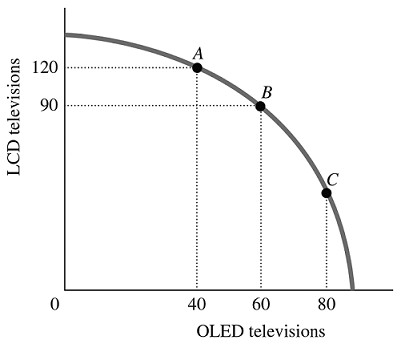Three basic decisions must be made by all economies. What are they?
a. How much will be produced, when it will be produced, and how much it will cost.
b. What the price of each good will be, who will produce each good, and who will consume each good.
c. What will be produced, how goods will be produced, and for whom goods will be produced.
d. How the opportunity cost principle will be applied, if and how the law of comparative advantage will be utilized, and whether the production possibilities constraint will apply.
c
You might also like to view...
The vertical distance between a firm's total cost (TC) and its total variable cost (TVC) curves
A) decreases as output decreases. B) is equal to the average variable cost, AVC. C) is equal to the total fixed cost, TFC. D) is equal to the marginal cost, MC.
The greatest global redistribution of income ever recorded occurred in the 1970s as a direct result of
a. a worldwide drop in food prices b. the OPEC cartel c. growing international oligopoly d. a shift from balanced to unbalanced oligopoly e. a shift from price leadership to kinked demand curve oligopoly
With regard to the characteristics of production indifference curves, which of the following statements is/are NOT true? a. Higher curves correspond to larger outputs
b. An indifference curve will generally have a negative slope. c. An indifference curve is typically assumed to curve inward toward the origin near its middle. d. All of the above are true for production indifference curves, but not for isoquants. e. b and c
Refer to the information provided in Figure 2.5 below to answer the question(s) that follow. Figure 2.5Refer to Figure 2.5. The economy is currently at Point A. The opportunity cost of moving from Point A to Point B is the
Figure 2.5Refer to Figure 2.5. The economy is currently at Point A. The opportunity cost of moving from Point A to Point B is the
A. 30 LCD televisions that must be forgone to produce 60 additional OLED televisions. B. 90 LCD televisions that must be forgone to produce 20 additional OLED televisions. C. 30 LCD televisions that must be forgone to produce 20 additional OLED televisions. D. 120 LCD televisions that must be forgone to produce 40 additional OLED televisions.